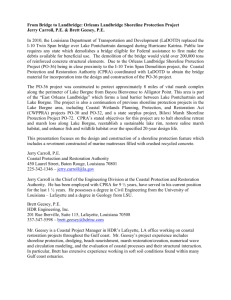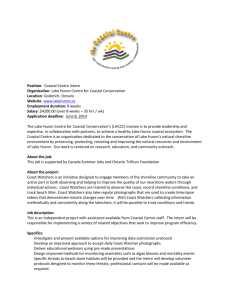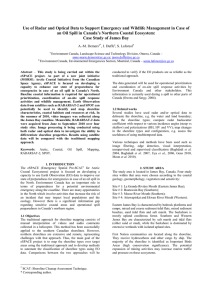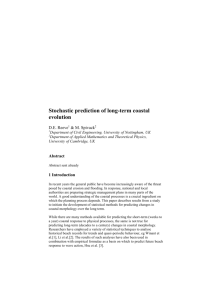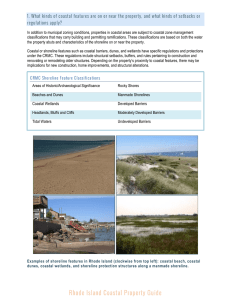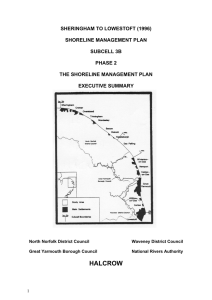ASBPA 2014 – Abstract Chris Mack Presentation Title: Coastal
advertisement
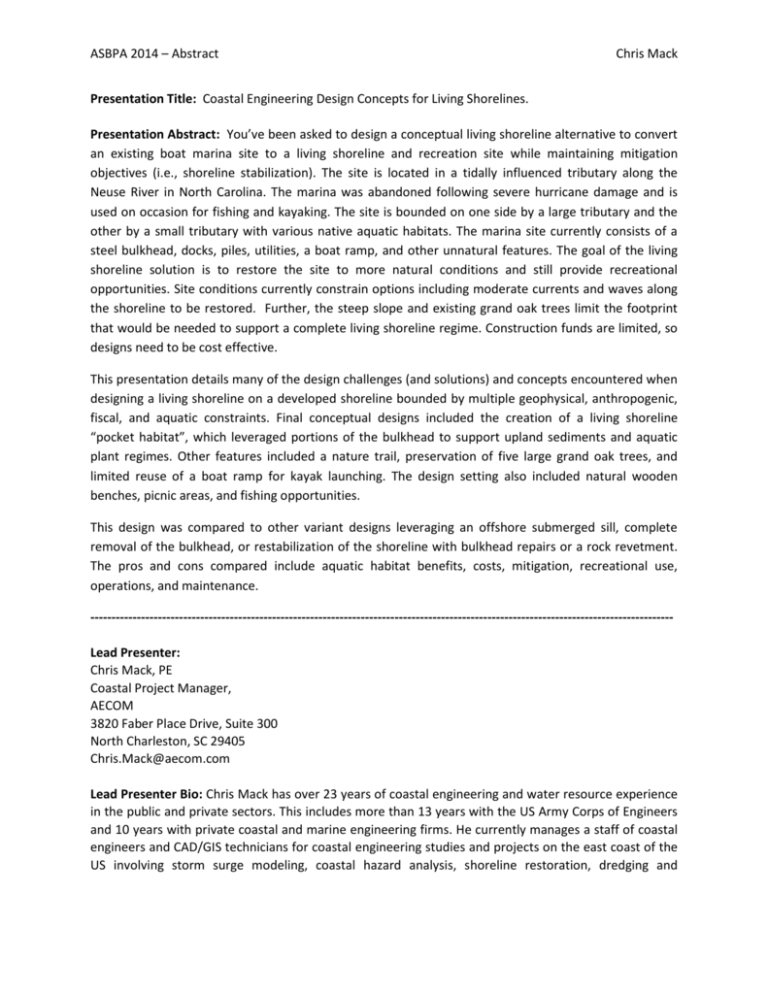
ASBPA 2014 – Abstract Chris Mack Presentation Title: Coastal Engineering Design Concepts for Living Shorelines. Presentation Abstract: You’ve been asked to design a conceptual living shoreline alternative to convert an existing boat marina site to a living shoreline and recreation site while maintaining mitigation objectives (i.e., shoreline stabilization). The site is located in a tidally influenced tributary along the Neuse River in North Carolina. The marina was abandoned following severe hurricane damage and is used on occasion for fishing and kayaking. The site is bounded on one side by a large tributary and the other by a small tributary with various native aquatic habitats. The marina site currently consists of a steel bulkhead, docks, piles, utilities, a boat ramp, and other unnatural features. The goal of the living shoreline solution is to restore the site to more natural conditions and still provide recreational opportunities. Site conditions currently constrain options including moderate currents and waves along the shoreline to be restored. Further, the steep slope and existing grand oak trees limit the footprint that would be needed to support a complete living shoreline regime. Construction funds are limited, so designs need to be cost effective. This presentation details many of the design challenges (and solutions) and concepts encountered when designing a living shoreline on a developed shoreline bounded by multiple geophysical, anthropogenic, fiscal, and aquatic constraints. Final conceptual designs included the creation of a living shoreline “pocket habitat”, which leveraged portions of the bulkhead to support upland sediments and aquatic plant regimes. Other features included a nature trail, preservation of five large grand oak trees, and limited reuse of a boat ramp for kayak launching. The design setting also included natural wooden benches, picnic areas, and fishing opportunities. This design was compared to other variant designs leveraging an offshore submerged sill, complete removal of the bulkhead, or restabilization of the shoreline with bulkhead repairs or a rock revetment. The pros and cons compared include aquatic habitat benefits, costs, mitigation, recreational use, operations, and maintenance. -----------------------------------------------------------------------------------------------------------------------------------------Lead Presenter: Chris Mack, PE Coastal Project Manager, AECOM 3820 Faber Place Drive, Suite 300 North Charleston, SC 29405 Chris.Mack@aecom.com Lead Presenter Bio: Chris Mack has over 23 years of coastal engineering and water resource experience in the public and private sectors. This includes more than 13 years with the US Army Corps of Engineers and 10 years with private coastal and marine engineering firms. He currently manages a staff of coastal engineers and CAD/GIS technicians for coastal engineering studies and projects on the east coast of the US involving storm surge modeling, coastal hazard analysis, shoreline restoration, dredging and ASBPA 2014 – Abstract Chris Mack navigation, ecosystem/habitat restoration, coastal processes, beach/inlet management plans, and climate change. He serves as a lead for the ASFPM’s coastal mapping and technology sub-committee.


